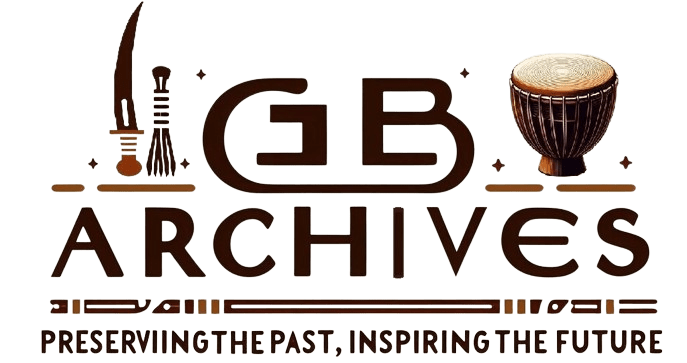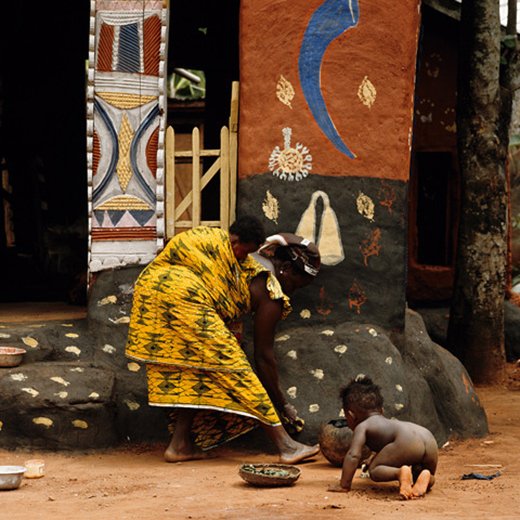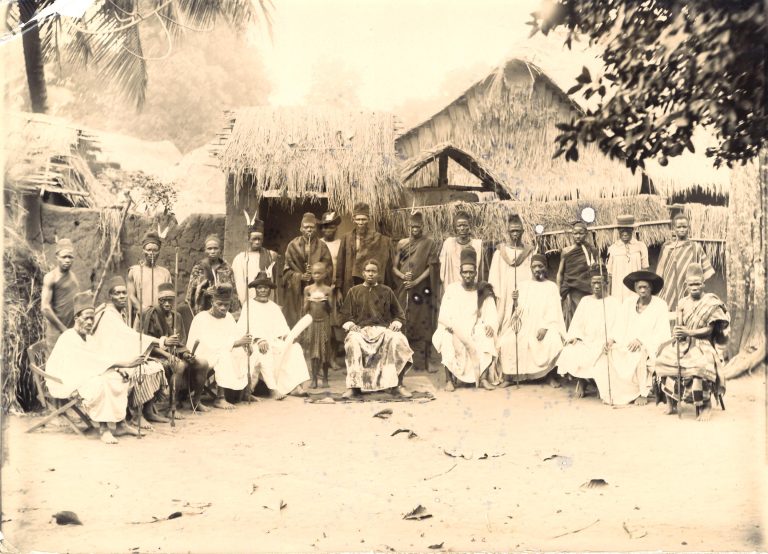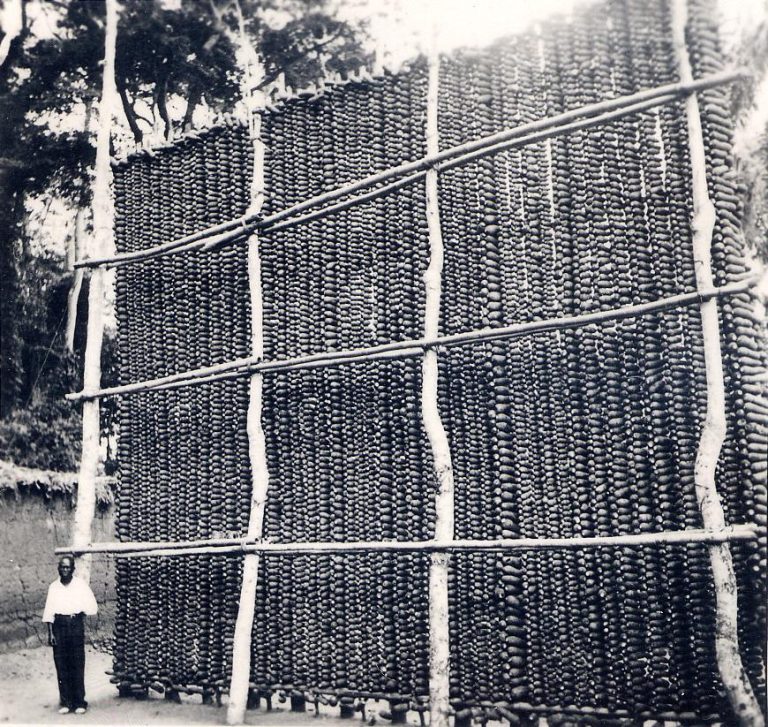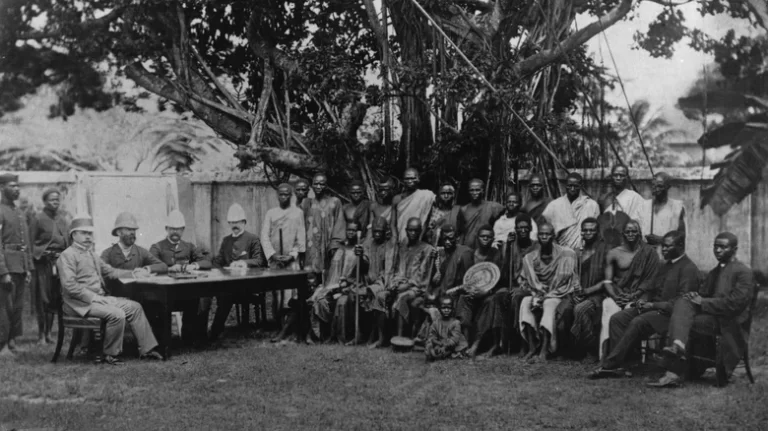Traditional Igbo clothing has often been misunderstood, particularly in the context of what some might call “nudity.” Historical photographs of the Igbo people have frequently been misinterpreted as symbols of backwardness or immodesty by outsiders. However, these depictions reflect a rich cultural history deeply rooted in environmental, social, and spiritual factors.

Source: Basden, G. T. Among the Ibos of Nigeria. Philadelphia: J.B. Lippincott, 1921, pg. 96.
This early 20th-century black-and-white photograph depicts three Igbo women in traditional attire. They are adorned with nja anklets and akwa ocha, their bare upper bodies a reflection of societal norms and cultural values of the time.
This post explores the historical significance of minimal clothing in Igboland, addressing how practical needs, cultural beliefs, and spiritual values shaped the clothing choices of the Igbo people, and how Western misinterpretations distorted their understanding.
The Climate’s Role
The tropical climate of southeastern Nigeria, home to the Igbo people, has always played a central role in shaping traditional attire. With temperatures often rising above 30°C (86°F) and humidity levels frequently high, wearing heavy or restrictive clothing would have been uncomfortable and even dangerous.
- Heat and Humidity: Igboland’s climate requires light clothing to allow for air circulation and to keep the body cool. The minimal clothing worn by men and women alike was practical for working long hours in the sun or engaging in physically demanding tasks like farming and trading. Heavy clothing would have inhibited movement and exacerbated heat stress, making simple loincloths (ogodo) or short waist wrappers essential for daily life.
- Material Choices: Traditional clothing was made from breathable materials such as cotton, which allowed for natural ventilation. Cotton fabric, which absorbs sweat and promotes cooling, was particularly suited for the hot and humid climate of southeastern Nigeria. Lightweight and durable, these fabrics were perfect for both everyday wear and physical labor.
Social and Cultural Significance
What appeared as “nudity” to the colonial eye was, in fact, a deeply meaningful aspect of Igbo culture. Clothing—or the lack thereof—communicated age, social status, and even life transitions such as rites of passage.
- Childhood Innocence: In Igbo society, children often wore minimal or no clothing, a practice that continued until adolescence. This was not seen as inappropriate but as a natural state of innocence, free from societal expectations. Children were considered spiritually pure, and their lack of clothing reflected this purity.
- Young Women and Fertility: Young women, once they reached puberty, adorned themselves with waist wrappers, beads, and bracelets to signify their beauty, vitality, and fertility—qualities celebrated in Igbo culture. Bare chests among maidens were a common sight and were not viewed as immodest; rather, they signified purity and readiness for womanhood.
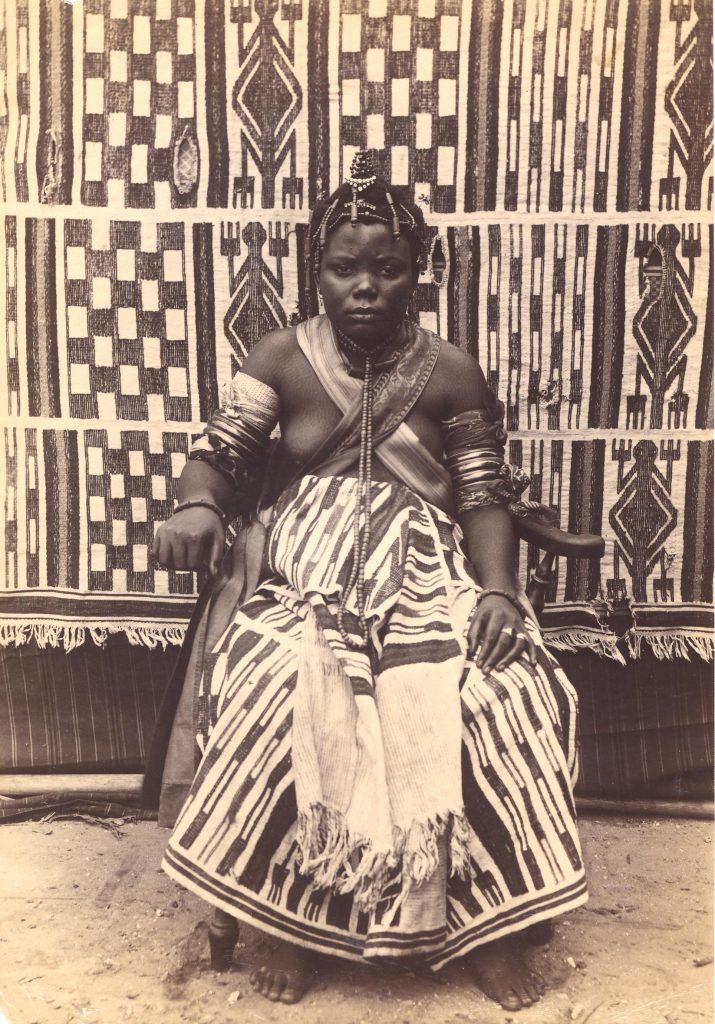
© The Trustees of the British Museum. Shared under a Creative Commons Attribution-NonCommercial-ShareAlike 4.0 International (CC BY-NC-SA 4.0) license.
This 1880–1905 photograph shows a young Igbo bride in traditional wedding attire. Her exposed breasts and adorned body reflect the cultural emphasis on fertility and beauty during important life milestones like marriage.
Casual and Ceremonial Clothing
A significant distinction existed between casual and ceremonial clothing in Igbo culture. Everyday clothing was practical, designed for work and ease of movement, while ceremonial clothing carried layers of symbolic meaning, reflecting social status, and occasion. Two images help illustrate this difference, both featuring elders but in vastly different contexts.
- Casual Clothing for Daily Life: The image of an elder from Awka sitting casually in simple attire reflects how respected individuals dressed during ordinary activities. This elder, while highly regarded, wears minimal clothing appropriate for daily tasks. The lack of elaborate adornments signifies the functional nature of casual clothing.
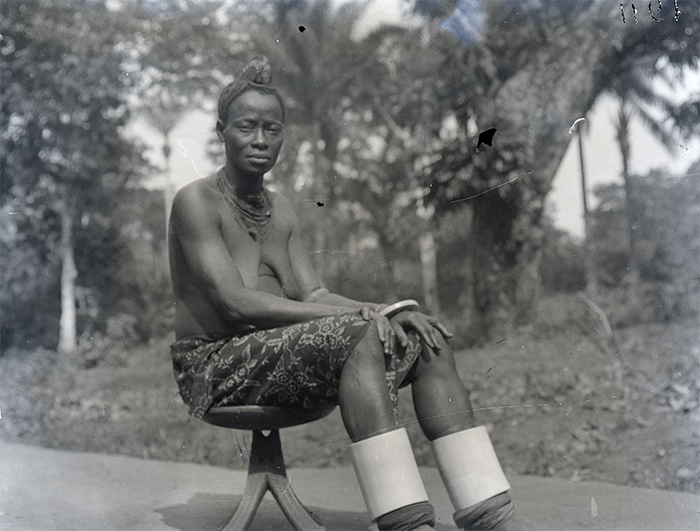
© MAA Cambridge. Shared under a Creative Commons Attribution-NonCommercial-ShareAlike 4.0 International (CC BY-NC-SA 4.0) license.
A 1912 photograph of an elder from Awka seated on a ceremonial stool. Despite her Ọzọ title, she wears casual clothing appropriate for daily life, illustrating how elders dressed when not engaged in ceremonial duties.
- Ceremonial Clothing for Special Occasions: In contrast, the image of Chief Obudugbo, also known as the Ezeana of Neni, showcases the elaborate attire worn during ceremonial events. His clothing is adorned with beads and heavy fabric, signaling his high status and the occasion’s importance. His outfit serves as a reminder that while minimal clothing was typical for daily life, special occasions demanded intricate garments imbued with symbolic significance.
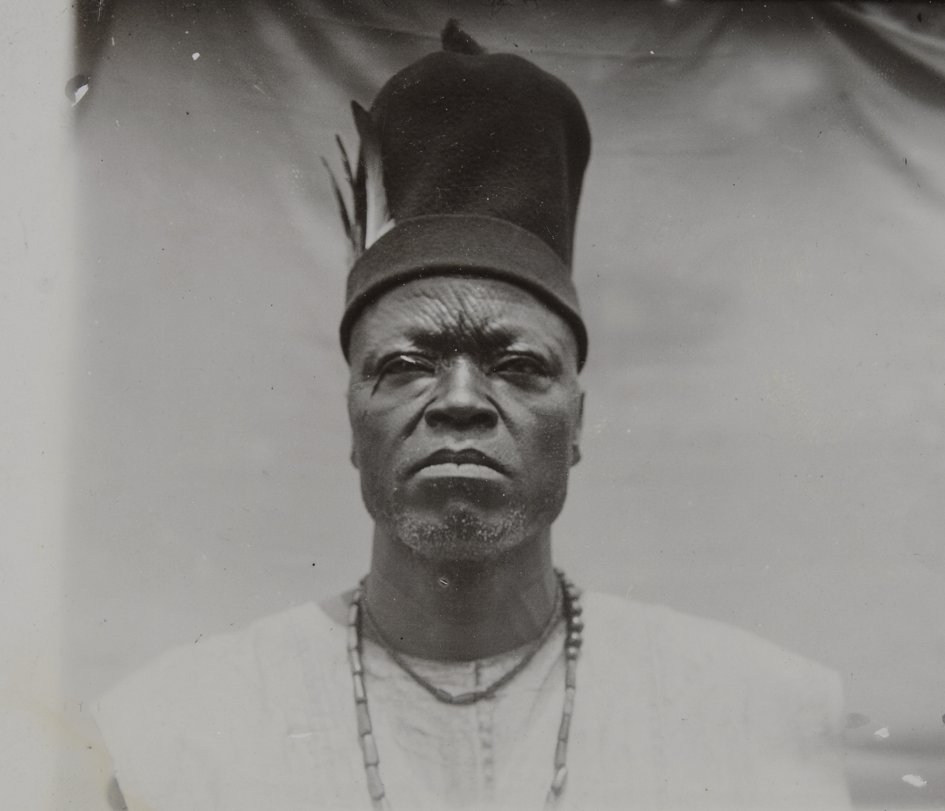
© MAA Cambridge. Shared under a Creative Commons Attribution-NonCommercial-ShareAlike 4.0 International (CC BY-NC-SA 4.0) license.
This black-and-white photograph of Chief Obudugbo, taken around 1910–11 by Northcote Thomas, illustrates the stark difference in attire for ceremonial occasions. His necklace of large beads and patterned garment emphasize his status as a leader and elder in the Igbo community.
The comparison between these two elders—one in casual attire, the other in ceremonial clothing—highlights how Igbo people carefully distinguished between the demands of daily life and the significance of special occasions.
Minimal Clothing for Men
For men, the most common form of minimal clothing was the ogodo or loincloth. Worn around the waist and secured by tying the fabric, the ogodo served practical and cultural purposes in Igbo society. It was a garment suitable for farming, trading, and daily activities, offering freedom of movement in the heat.
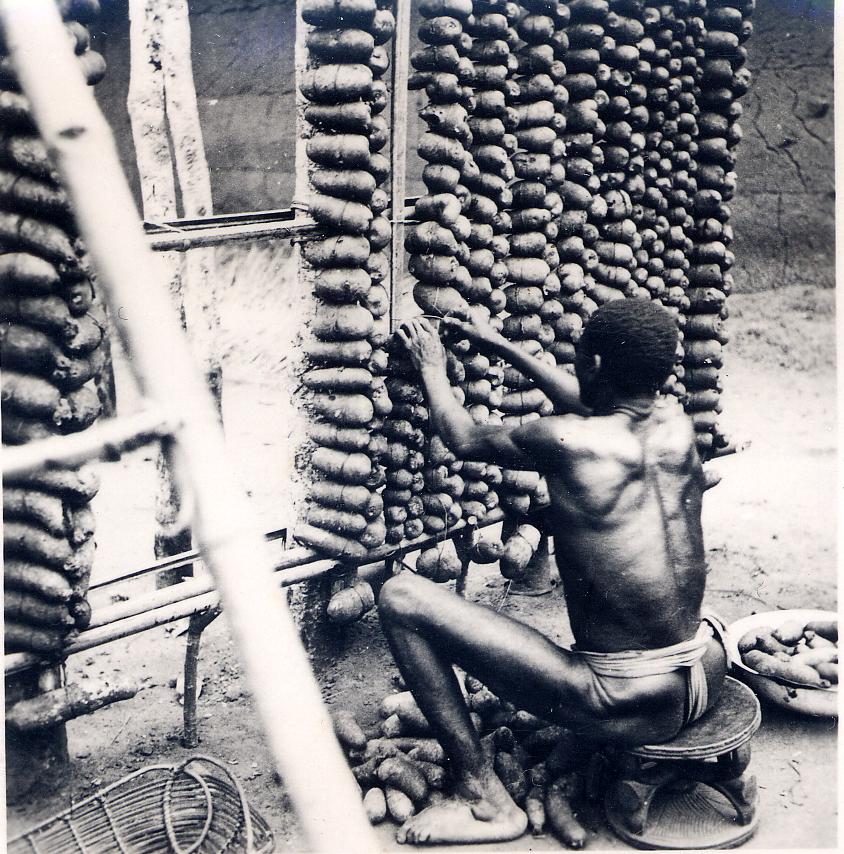
This image captures the typical attire of an Igbo man in a loincloth, showing the simplicity and practicality of the garment for everyday tasks such as working in the fields or trading.
The ogodo symbolized simplicity and utility. Although minimal in design, it was often made from durable fabrics that could withstand the physical demands of manual labor. The loincloth allowed the body to breathe while providing modest coverage. It is important to note that men of high rank would sometimes enhance their loincloth with adornments for special occasions, similar to how women’s attire changed depending on the occasion.
Spiritual Significance of Clothing and Adornments
Igbo attire was not only shaped by practical considerations but also carried profound spiritual meanings. Clothing and adornments often signified spiritual protection, status, and purity, all vital aspects of Igbo cosmology.
- Protective Beads and Charms: Beads and waist chains worn by women were not just decorative; they were believed to protect the wearer from evil spirits and attract prosperity. Women would wear these adornments during significant life events, such as marriage or childbirth, to ensure spiritual favor and protection.
- Status Indicators for Titleholders: Those who held prestigious titles, such as the Ọzọ title, were recognized by their elaborate leg and arm ornaments, often made from ivory or precious materials. These symbols denoted the wearer’s power, influence, and divine protection. The elder from Awka, although dressed in casual clothing in one image, likely adorned herself with such items during ceremonies, symbolizing her esteemed position in society.
Misinterpretations by Westerners
When Europeans arrived in Igboland, they brought with them a different set of cultural values and norms, leading to a fundamental misunderstanding of Igbo dressing practices. Minimal clothing was misinterpreted as nudity, and in the eyes of the colonizers, this reflected primitivity or moral inferiority.
- Colonial Judgments: European colonizers frequently viewed exposed bodies as a sign of “backwardness,” imposing their own standards of modesty and clothing onto African societies. For them, bare breasts and minimal clothing were associated with immorality, despite the fact that the Igbo people had their own complex norms surrounding dress.
- Impact of Christian Missionaries: Missionaries played a significant role in transforming traditional Igbo attire. Christian teachings emphasized modesty, encouraging converts to adopt Western clothing styles. Over time, this led to the decline of traditional attire as Western norms became embedded within Igbo culture.
Broader African Context: Clothing Across the Continent
The Igbo were not alone in facing these challenges. Across Africa, many societies developed minimal clothing styles suited to their environments and spiritual beliefs. The Turkana people of Kenya, the Zulu of South Africa, and many West African communities all embraced minimal clothing practices, which were similarly misinterpreted by European observers.
- West African Examples: Historical accounts, such as those by the famed traveler Ibn Battuta, illustrate how various West African societies embraced minimal clothing, particularly in hot and humid regions. Like the Igbo, these societies valued practical, breathable clothing, which was often replaced with more elaborate garments during important ceremonies.
- Cultural Resilience: Despite the efforts of colonial powers and missionaries to impose Western clothing norms, many African societies, including the Igbo, have retained aspects of their traditional dress. In modern Igboland, you can still find people wearing cultural attire during festivals, weddings, and other important events, preserving a connection to the past.
Conclusion
The significance of minimal clothing in Igbo history is both profound and multifaceted. What appeared as nudity to outsiders was, in fact, a deeply rooted cultural expression shaped by the climate, social structure, and spiritual beliefs of the Igbo people. While colonial misinterpretations sought to diminish the value of these traditions, they remain a testament to the rich cultural heritage of the Igbo.
As we reflect on the transition from traditional to modern clothing, it is essential to appreciate how Igbo attire evolved and how it continues to influence fashion in contemporary Igbo society. Traditional dress serves as a powerful reminder of the ingenuity, resilience, and beauty of Igbo culture.
How do you think the shift from traditional to Western clothing has impacted cultural identity in Igboland? Share your thoughts in the comments below!
Discover more from Igbo Archives
Subscribe to get the latest posts sent to your email.

